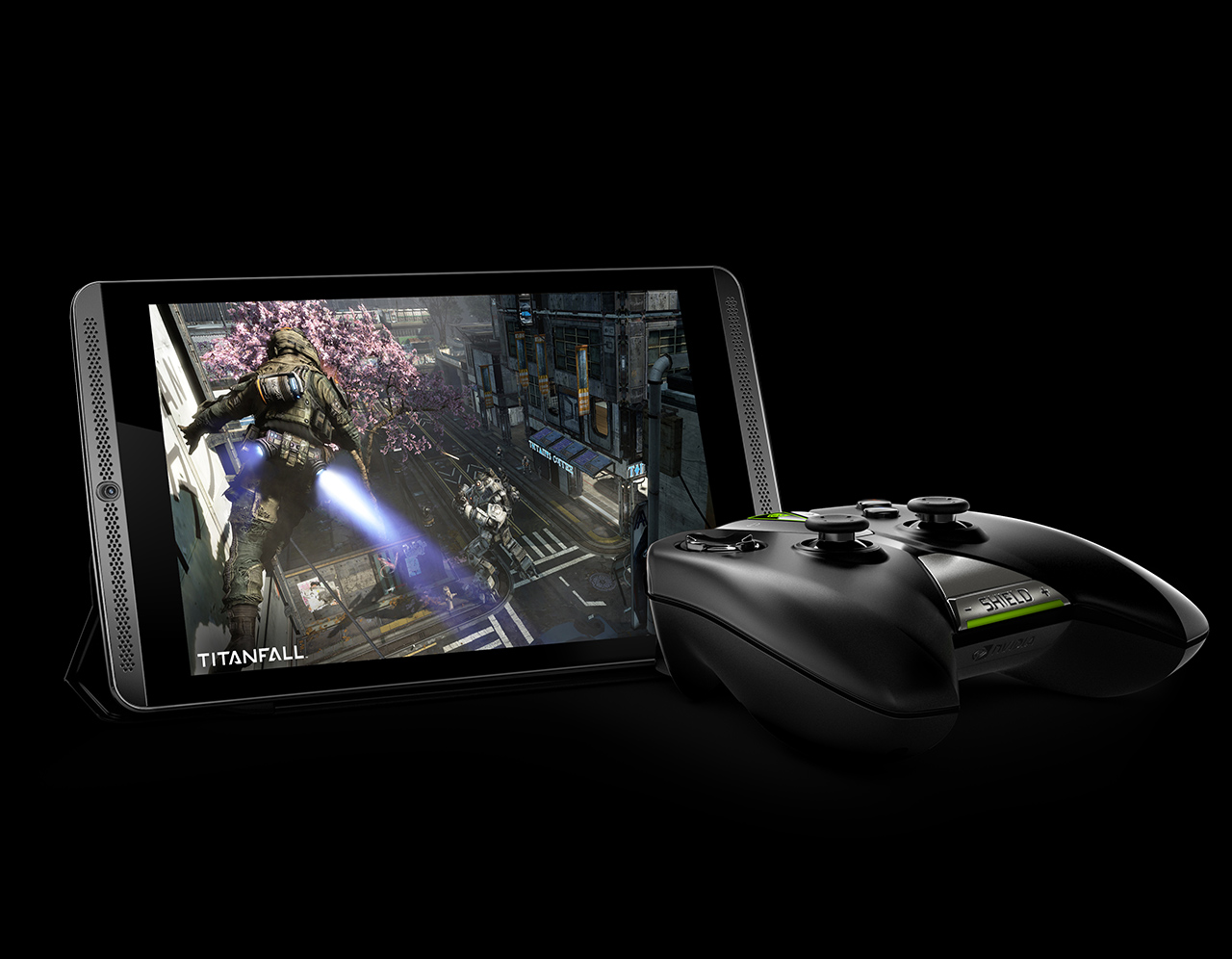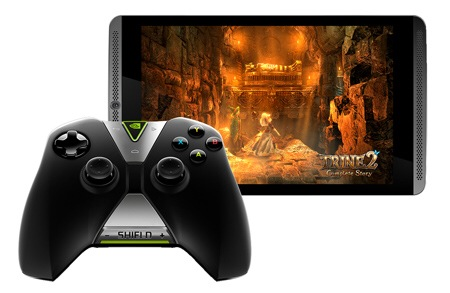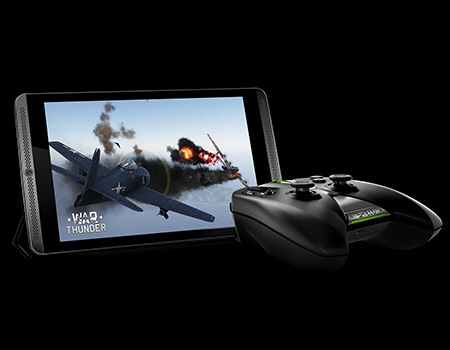Nvidia unveils the Shield Tablet and controller - a Tegra K1 device for gamers, and for streamers
Hands-on with Nvidia's Shield follow-up


Nvidia has announced a pair of new products for its Shield range: a high-end gaming tablet called the Shield Tablet, and a compatible - but separately sold - joypad called the Shield Wireless Controller.
The tablet sports Nvidia's new Tegra K1 chip, which the firm says gives developers double the power of an iPad Air. Some 11 games have been specifically optimised for Tegra K1 - including Trine 2, which comes with the device for free.
In an appeal to hardcore settings-tweakers, there is an optional high performance mode that can let the tablet run even faster - perhaps for better frame rate in high-end games - at the expense of the tablet's battery life.
In the normal mode, you'll get about four hours out of the gadget when playing high end games, or ten in normal use.
 The Tegra K1 chip is powerful, but not Titanfall powerful. You can stream Respawn's robo shooter from a nearby PC
The Tegra K1 chip is powerful, but not Titanfall powerful. You can stream Respawn's robo shooter from a nearby PC
The 8 inch screen spits out video at a 1080p resolution, and the tablet has 5 megapixel front- and rear-facing cameras, speakers, and a microphone. You can also plug it into a TV using HDMI out, swap out the microSD card, and tug out a little stylus.
It uses the same PC game streaming tech as the Shield (now dubbed the Shield Portable by Nvidia, so as not to confuse matters), so you'll need a GTX-650 card, or higher, to send some 120 PC games to the device.
The games will stream at 720p over wi-fi, but you can plug in a wired ethernet adapter to get 1080p.
And you can stream to Twitch, capture footage, or save the last few minutes of gameplay by pressing a button on pad, because that's a thing that people do these days.
Then there's the controller. It looks a lot like an Xbox One controller (makes a change from all the Xbox 360 pad knock-offs), but feels quite like the pad that's built into the Shield Portable.
 The volume buttons click, but the back, home, and record buttons are touch sensitive
The volume buttons click, but the back, home, and record buttons are touch sensitive
It's nice and has great analogue sticks, but the pad is maybe not as "console quality" as Nvidia is touting. It has a slightly cheap feel with clicky, plasticky buttons, and squishy triggers.
While most pads use Bluetooth, this one used wi-fi direct. Apparently that gives you lower latency - something that will only matter when you're pairing up multiple controllers (the Shield tablet supports four at once).
For this reason, the controller won't work on other Android devices, but Nvidia says its in talks with Google to integrate the tech into the main Android stack so it will work with other phones and tablets. It does connect to the Shield Portable, though.
The controller has a headset jack in the controller for game chat, an integrated mic for Google voice search from your sofa, and a touchpad for playing with games designed for mouse or touchscreen input.
If you don't buy the controller, most games will work on the tablet with touch, but some will require a pad. Any pad, that is, as it works with other Bluetooth controllers.
 Free-to-play dogfight game War Thunder runs natively on the device, and looks lovely while doing so
Free-to-play dogfight game War Thunder runs natively on the device, and looks lovely while doing so
The Shield Tablet is certainly an impressive device, and a Unreal Engine 4 tech demo I saw looked suspiciously close to providing PS4-level graphics. Whether it's any good as a tablet in its own right will remain to be seen, but as a gaming gizmo, it's a pretty hot prospect.
The Shield Tablet and Wireless Controller are out this month in North America, are due in Europe in mid August, and will debut in other territories before the year is out.
The tablet comes in two versions: a 16GB wi-fi-only edition for $299, and a 32GB LTE version for $399. The controller will cost $59, and there's a cover/stand available for $39 if you want to go all in. And there's no discount for buying the lot.
